US steel policy to require robust reply
 |
| If steel and aluminium exporters can diversify markets, they would be less affected by the US policy |
The US last week declared it would reinstate a 25 per cent tariff on steel imports and increase tariffs on aluminium imports from 10 per cent to 25 per cent, with effect from March 4.
The tariff eliminates exemptions for some allies of the United States, including Canada and Mexico. Previously, the likes of Canada, Mexico, Brazil, the EU, Japan, and South Korea – all significant steel exporters to the US in 2024 – were exempt. Vietnamese steel and aluminium are subject to tax rates of 25 and 10 per cent, respectively, under a policy applied to most countries since 2018.
Do Bao Ngoc, deputy general director of Vietnam Construction Securities, said that this policy was applied in many other countries to prevent foreign steel from circumventing the law by exporting through third parties.
“The US government hopes that this high tax rate will help the domestic steel industry become more competitive, reducing dependence on foreign supplies. Protecting the domestic manufacturing industry can create more jobs and support domestic businesses to develop,” Ngoc said.
“This increase does not discriminate between countries exporting steel to the US, meaning that competition has not been more fierce than it is now. Vietnamese enterprises themselves only have the option of reducing costs to increase competitiveness,” added Ngoc.
He noted that diversifying export markets was necessary. Instead of focusing too much on the US market, Vietnamese steel enterprises can seek opportunities in other markets such as Europe, Japan, or ASEAN. Expanding the market will help reduce dependence on a single market, limiting risks when trade policies change.
SSI Securities Corporation said there was little impact on the Vietnamese steel industry in terms of exports to the US. However, it will take time to consider the final impact because the decree is complicated. Accordingly, there are a number of other taxes, such as countervailing duty and anti-dumping duty.
According to the Vietnam Steel Association, before 2025, the US had repeatedly imposed anti-dumping and anti-subsidy duties on steel and aluminium products imported from Vietnam. This has caused a significant decline in Vietnam’s steel exports to the US.
Vietnam’s steel and aluminium export market share in the US has decreased from 10 per cent in 2020 to 8 per cent in 2022 and continued to decrease to about 5 per cent in 2024. Enterprises such as Hoa Phat Group, Hoa Sen Group, and Nam Kim Steel are most affected due to their high export proportion to the US.
A representative of Toan Thang Steel Company said that if steel and aluminium exporting enterprises had more diverse markets outside the US market, they would be less affected by this tax decree. Specifically, in terms of raw material prices, by the end of 2024, steel and raw material prices in the world will decrease by 5 per cent to 35 per cent, depending on the market.
“Therefore, in the short term, if raw material prices increase, it will not be significant. As for market share, it will decrease in the US, but if other markets are exploited well, it will increase,” the representative said.
For Toan Thang Steel Company in particular, public investment, including allowing domestic enterprises to participate deeply in government projects, has helped the company stabilise production. Regarding exports, instead of focusing only on the US market, the company has proactively expanded its market share to Southeast Asian countries.
“Thanks to that, the company’s orders in the first quarter of 2025 are expected to increase by more than half compared to the fourth quarter of 2024, estimated at $7 million,” he added.
Steel expert Nguyen Van Sua said that to face the imposition of taxes, businesses themselves had assessed the situation to have appropriate business strategies, expanding exports to markets that have free trade agreements with Vietnam, and avoiding dependence on one market.
He gave the instance of Hoa Phat Group not only diversifying its products and achieving high-quality steel products, but also targeting markets such as Japan, Canada, Australia, Singapore, China, South Korea, and Spain.
“The steel industry is one of those subject to the largest trade defence measures. In Vietnam, the trend of localisation has taken place, after information about the initiation of anti-dumping investigations on steel spread from other countries. Support for the steel industry from domestic consumption demand has returned, with the driving force coming from the recovery of the civil real estate market, and public projects continue to be implemented,” said Sua.
Faced with complicated developments in the global market, the Ministry of Industry and Trade has directed Vietnam’s foreign market departments and trade offices abroad to closely monitor market developments as well as economic and political fluctuations affecting trade with Vietnam to advise the government on appropriate policy responses.
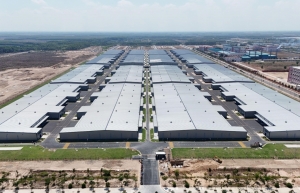 | Pebsteel building towards a sustainable future Pebsteel has been on a journey to build impressive projects around Vietnam and the world over the past three decades. No matter how challenging the undertaking is, Pebsteel offers its clients outstanding quality in the shortest construction time and on budget. |
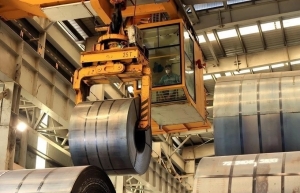 | Vietnam still holds opportunities for continued steel, aluminum exports to US: official Vietnam's steel and aluminum products are renowned for their competitive prices and high quality, offering significant value to the US economy by helping curb inflation and fostering stronger bilateral trade ties, a point echoed by many importing nations. |
 | PM encourages Hoa Phat Steel and THACO to join high-speed railway project Vietnamese groups Hoa Phat Steel and THACO are being encouraged to join the North-South high-speed railway project by producing high-speed rails and carriages. |
What the stars mean:
★ Poor ★ ★ Promising ★★★ Good ★★★★ Very good ★★★★★ Exceptional
Related Contents
Latest News
More News
- Takeda supports health resilience amid climate change challenges (December 18, 2025 | 12:39)
- Mondelez Kinh Do - a chapter of purpose-led leadership in Vietnam (December 18, 2025 | 09:44)
- VNPAY services receive the highest-level PCI DSS international security certificates for six consecutive years (December 17, 2025 | 23:47)
- PPL extends its reach into ASEAN (December 17, 2025 | 15:44)
- Over 600 BUV graduates meeting quality benchmarks across triple quality assurance levels (December 17, 2025 | 13:00)
- HEINEKEN Vietnam partners with Ho Chi Minh City Traffic Police on road safety drive (December 17, 2025 | 09:42)
- BUV and China’s CSCSE sign MoU to boost educational cooperation (December 17, 2025 | 08:00)
- PVT Logistics honoured with ‘Fast Enterprise Award’ at APEA 2025 (December 16, 2025 | 18:22)
- Empowering Sustainable Data Centers with Smart Infrastructure Solutions (December 16, 2025 | 13:59)
- Vietjet wins gold ESG transport sustainability award in Taiwan (China) (December 13, 2025 | 22:03)

 Tag:
Tag:













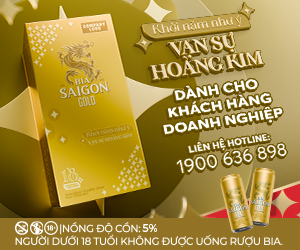





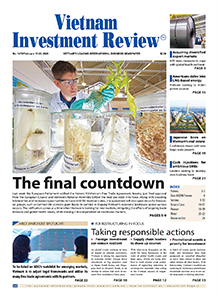
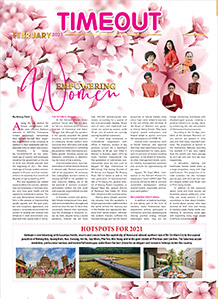

 Mobile Version
Mobile Version